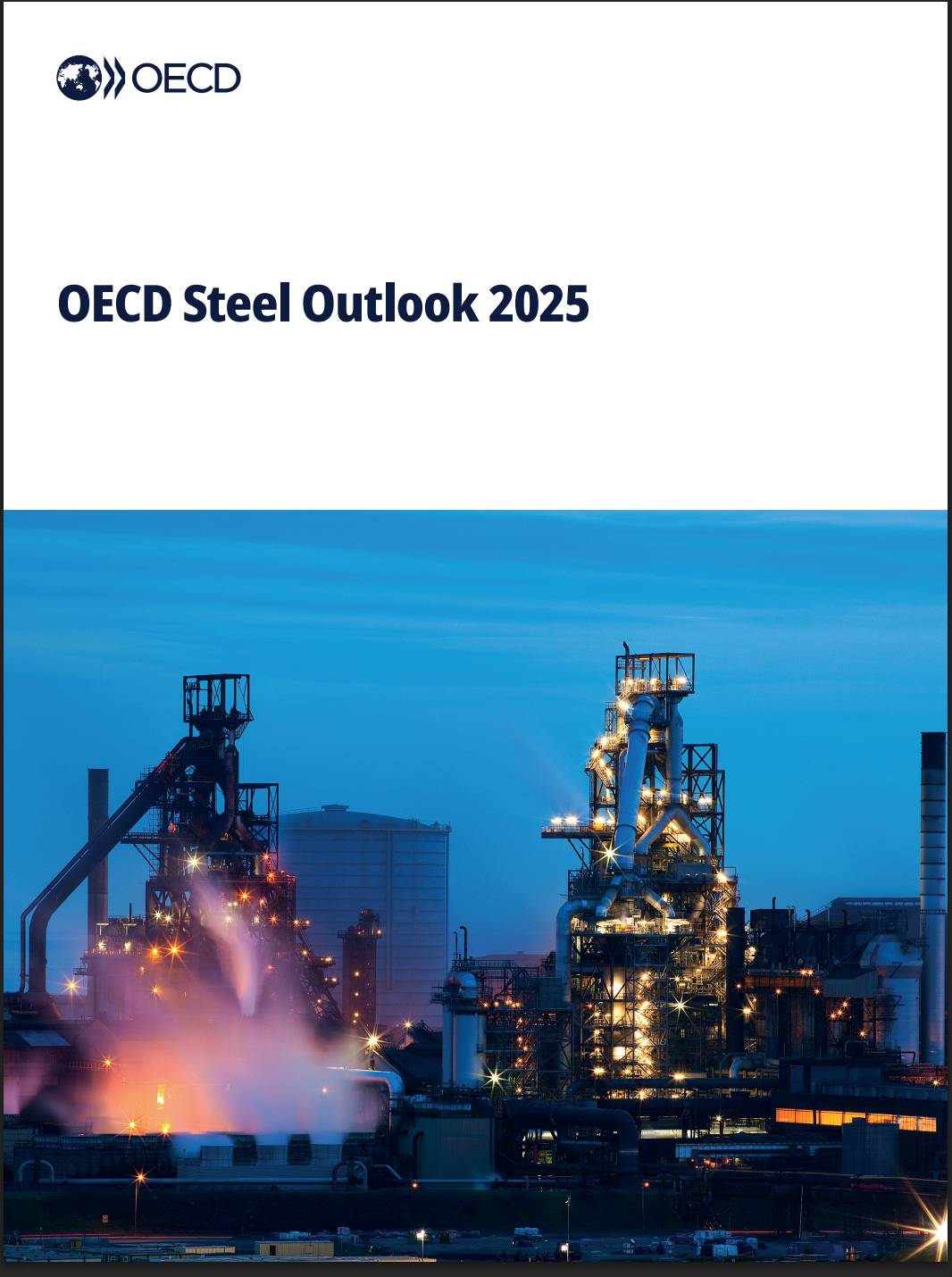Green Steel: A Strategic Opportunity with Financial Constraints
According to the Atradius 2025 Report, demand for “green steel” is rising, but poses serious financial challenges. Investments in electric arc furnaces and renewable energy supply chains are necessary but costly, especially for SMEs. All this is happening in a context of global overcapacity, cost inflation, and stiff price competition from low-carbon producers.
OECD: Rising Capacity, Sluggish Demand
The OECD projects a 6.7% increase in global steel production capacity by 2027, with utilization rates possibly dropping to 70%. Growth in demand in OECD countries will remain weak (<1% per year), increasing pressure on European producers to innovate and decarbonize quickly.
Trade Policy Dynamics and Strategic Support Measures
In the U.S., 25% steel import duties are protecting domestic production but are penalizing European and Canadian exporters. Meanwhile, the EU is betting on CBAM and “friend-shoring” policies to encourage regional relocation and competitiveness.
Key Trends in Industry and Investment to Watch
- Energy transition: Reskilling in renewable energy and energy efficiency is rising.
- Predictive maintenance: AI-powered solutions and sensor technologies are scaling up to reduce downtime and improve performance.
- Scrap-based EAF strategy: Electric arc furnaces and circular economy models are gaining ground — boosting resilience and autonomy in steel production.
Why This Matters for Matissart
- These developments emphasize the need to align R&D, ESG and energy strategies to maintain competitiveness.
- They underline the growing demand for high-skilled industrial jobs in design, machining, maintenance and quality control.
- They call for early investments in Industry 4.0 infrastructure: digitization, integrated data platforms…
